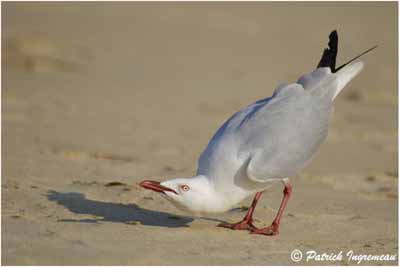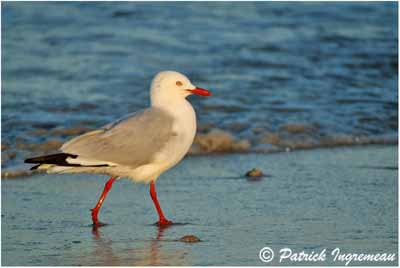
Silver Gull
Chroicocephalus novaehollandiae
Charadriiforme Order – Laridae Family
BIOMETRICS:
Length: 40-45 cm
Wingspan: 91-96 cm
LONGEVITY: Up to 11 years
DESCRIPTION:
Silver Gull has a predominantly white and silvery-grey back, with black-tipped wings. It has white head, tail and whole underparts.
Irises are whitish, with an orange-red eye ring. Bill, legs and feet are orange-red.
Both sexes are similar.
PROTECTION / THREATS / STATUS:
Silver Gull has been able to increase its populations, thanks to the increased access to a wide-range of dietary items.
The only limiting factor to population increases is available nesting areas.
Fr: Mouette argentée
All : Silberkopfmöwe
Esp : Gaviota Plateada Australiana
Ital : Gabbiano australiano
Nd : Witkopmeeuw
Photographs by Patrick Ingremeau
TAMANDUA
Text by Nicole Bouglouan
Sources:
HANDBOOK OF THE BIRDS OF THE WORLD Volume 3 by Josep del Hoyo-Andrew Elliott-Jordi Sargatal - Lynx Edicions - ISBN : 8487334202
Wikipedia (Wikipedia, The Free Encyclopedia)
Welcome to the Australian Museum

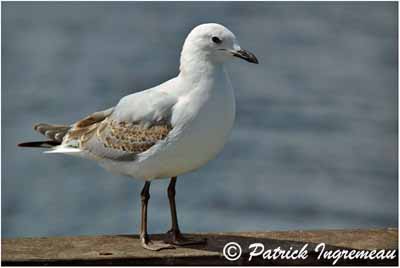
Juvenile have rows of brown speckles on the wings, and dark tips on tail feathers. Legs and bill are black. Irises are black.
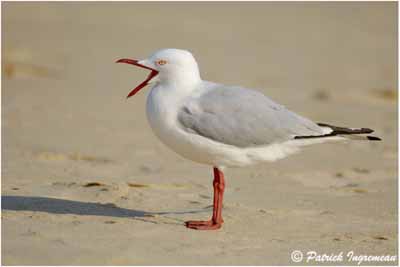
VOICE:
Silver Gull utters harsh calls, as a short “kaow” or “kwee-aarr”.
HABITAT:
Silver Gull is well adapted to urban areas, but it lives more on coastal areas, although it can be seen throughout the continent. It frequents sandy and rocky shores, beaches, parks and trash dumps.
RANGE:
Silver Gull is very common in Australia and New Zealand. It is also found in New Caledonia and Tasmania.
BEHAVIOUR:
Silver Gull is a successful scavenger. It pilfers from food containers, pesters humans for hand out of scraps, or searches for human refuse.
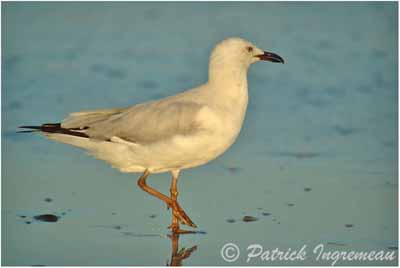
Silver Gull establishes a hierarchy of dominance. Older birds drive the younger away from feeding territories.
Silver Gull comes back to its nest at night. We can hear, through the dark, the thin and sharp cry of some belated gull.
FLIGHT:
Silver Gull flies in large flocks around fishing boats, but seldom ventures far out to sea.
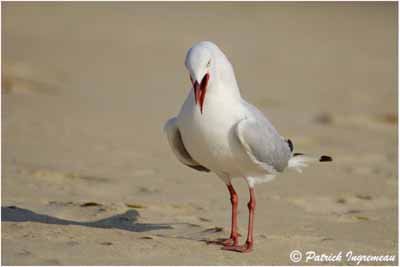
REPRODUCTION:
Mating occurs year round. Silver Gull nests in large colonies on offshore islands. Nest is scraped in a shallow depression on ground, and it is lined with vegetal materials. Both adults prepare the nest.
Female lays 3 whitish eggs, spotted with black, brown and purple. Incubation lasts about 21 to 27 days, shared by both parents. Chicks have pale greyish brown down, slightly spotted with black. Both adults feed the young. Those become independents at six weeks of age.
If chicks wander from their territory too soon they often are killed by other gulls.
This species produces two clutches per season. It may be reproductive during 11 seasons.
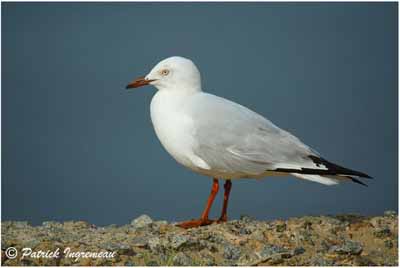
DIET:
Silver Gull feeds on refuse, fish, fish offal, marine and terrestrial invertebrates, but also berries, seeds and insects.
